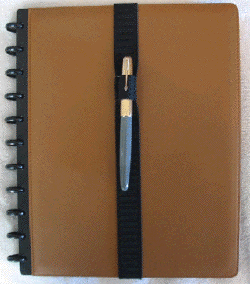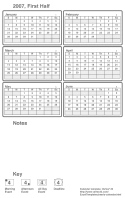 When I was a full-time records management and archives consultant, one of my tasks was to conduct surveys of our clients’ files and assess their recordkeeping practices. Despite the wide range of business conducted by our clients, the themes of their file-management stories were depressingly similar:
When I was a full-time records management and archives consultant, one of my tasks was to conduct surveys of our clients’ files and assess their recordkeeping practices. Despite the wide range of business conducted by our clients, the themes of their file-management stories were depressingly similar:
- Outdated or nonexistent file management plans
- No centralized colllection points or dedicated staff
- Uncertainty about who was responsible for keeping what
- No guidance on how long to keep files
- Paperwork management not integral to day-to-day operations
Their combined inertia inevitably fueled a downward spiral: I don’t know what to do with these files. I’ll deal with it later. The same goes for these files. I’ll just add them to the pile. Now the pile is way too big for me to manage. I don’t know what to do with these files. I’ll deal with it later . . .
Sound familiar?
Maybe the trick for those of us living in the era of life hacks and wikis is to find a way to turn the old model on its head and shake the useful loose change out of its pockets, to improvise new and better ways of managing files for our wired world. Welcome to the world of PaperJamming.

 Here’s a quick little hack that lets you park your hPDA and Circa 3×5 notes right in front of you while you work at your desk.
Here’s a quick little hack that lets you park your hPDA and Circa 3×5 notes right in front of you while you work at your desk. I’ve never been a big fan of the stitched-on pen loops that come with many daily planners, pad holders, and upscale notebooks like the Circa Leather Foldover. I find that when the notebook’s open, they get in the way; when the notebook’s closed, they keep the book from closing all the way.
I’ve never been a big fan of the stitched-on pen loops that come with many daily planners, pad holders, and upscale notebooks like the Circa Leather Foldover. I find that when the notebook’s open, they get in the way; when the notebook’s closed, they keep the book from closing all the way. Six months ago, I completed the transition of my work-related project and administrative paper files over to a system that uses
Six months ago, I completed the transition of my work-related project and administrative paper files over to a system that uses  AV’s first writer-optimized downloads — templates for the Hipster PDA (hPDA) — are now available on the
AV’s first writer-optimized downloads — templates for the Hipster PDA (hPDA) — are now available on the